Water, Energy, Climate
Water is one of our most precious—and endangered—resources. Here are three strategies to help keep us afloat
The UN projects roughly half the world’s population will lose adequate access to freshwater by 2030; in the U.S. alone, officials in forty out of fifty states expect to see shortages within the next ten years.
Cleaner Water = Cleaner Air

CO2, CH4, and N2O are each released during wastewater treatment. CH4 emissions are 25 times more powerful than CO2. N2O is 298 times more potent as a greenhouse gas.
Currently, most wastewater treatment plants in the United States are not required to measure or report their overall greenhouse gas (GHG) emissions including nitrous oxide (N2O). However, an increasing number of municipalities are self-imposing aggressive GHG reduction targets for which accurate measurement-driven GHG inventories will be needed.
Kartik Chandran, professor of earth and environmental engineering, develops sustainable wastewater technologies driven by microbial communities. His team worked with the Environmental Protection Agency to design an official protocol for measuring and reporting how much N2O is given off by each of the treatment methodologies in current use. In the process, they discovered that water’s ammonia content—a measure of its sanitation—is tied to N2O emissions.
Chandran’s research not only uncovered a significant source of underreported emissions, it also revealed a synergistic relationship between water purity and air quality that treatment plants can use to optimize facilities.
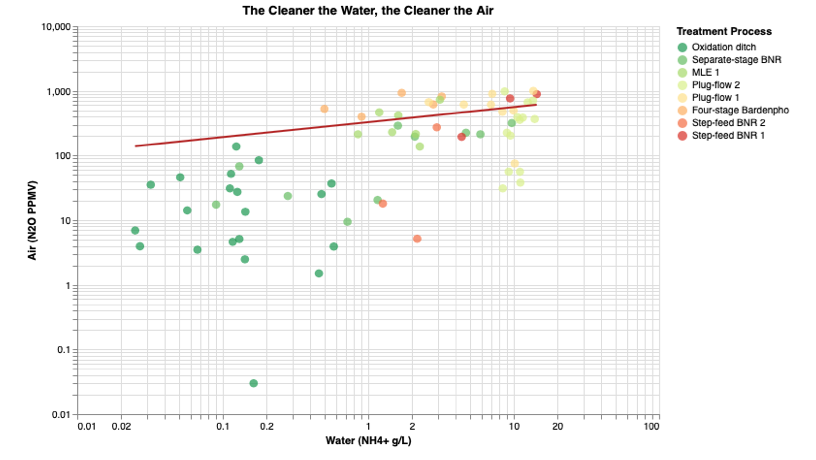
This scatterplot depicts relative measures of ammonia content (x-axis) and nitrous oxide emissions (y-axis). Treatment methods resulting in less ammonia also give off substantially less N2O.
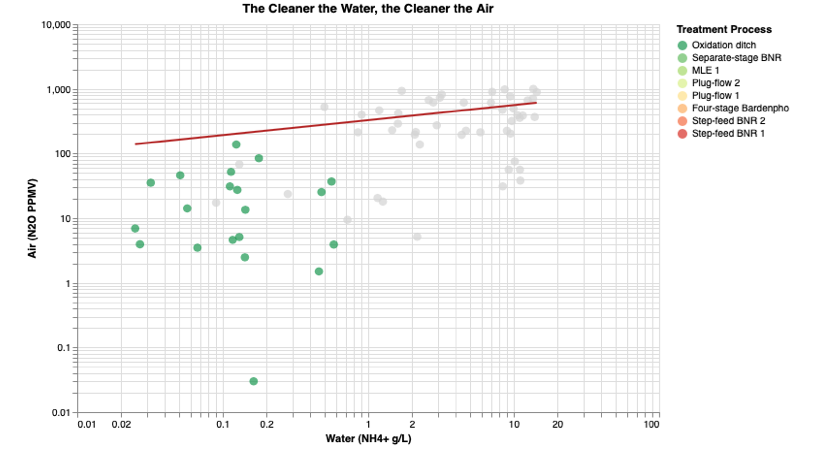
Oxidation ditch.
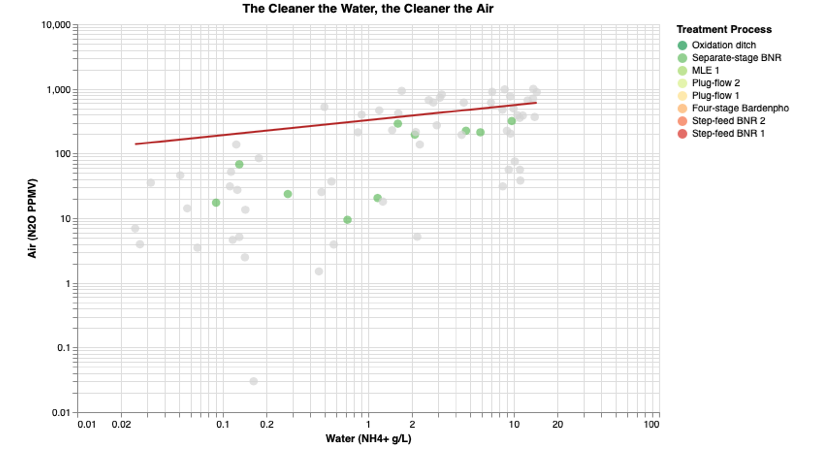
Separate-stage BNR.
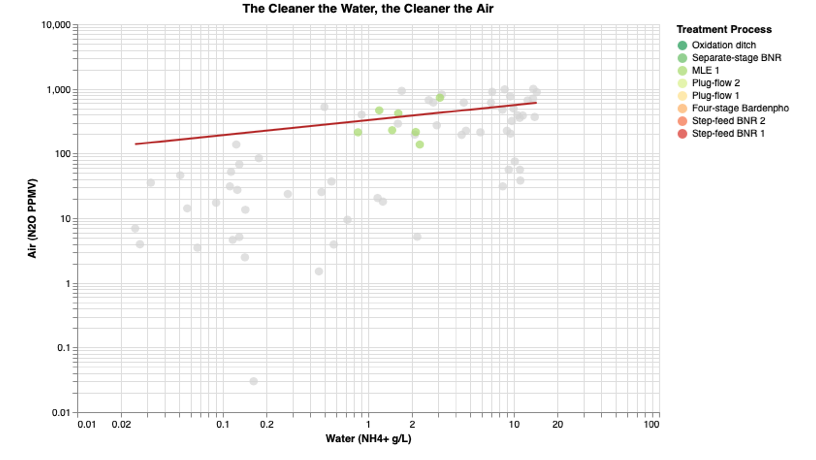
MLE 1.
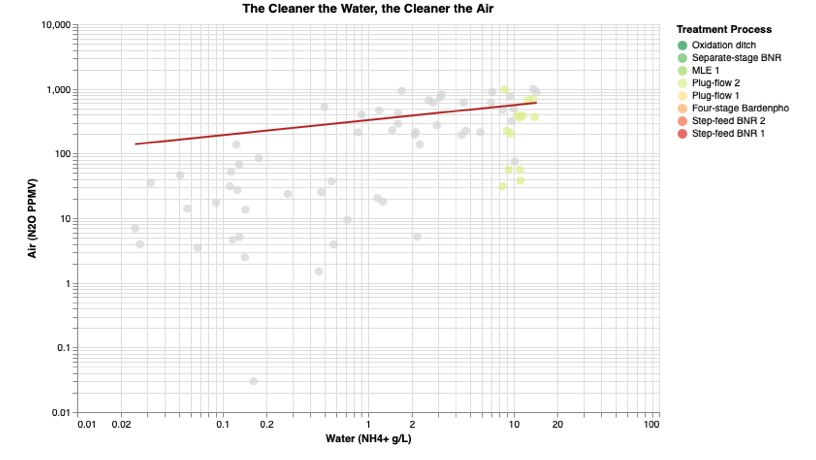
Plug-flow 2.
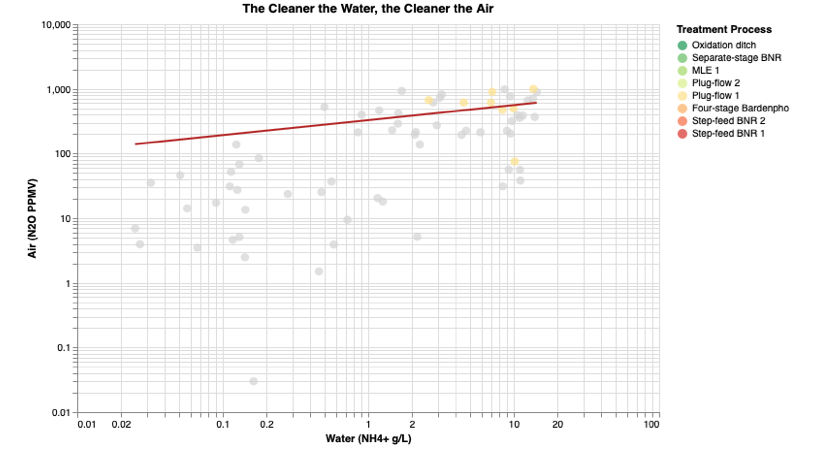
Plug-flow 1.
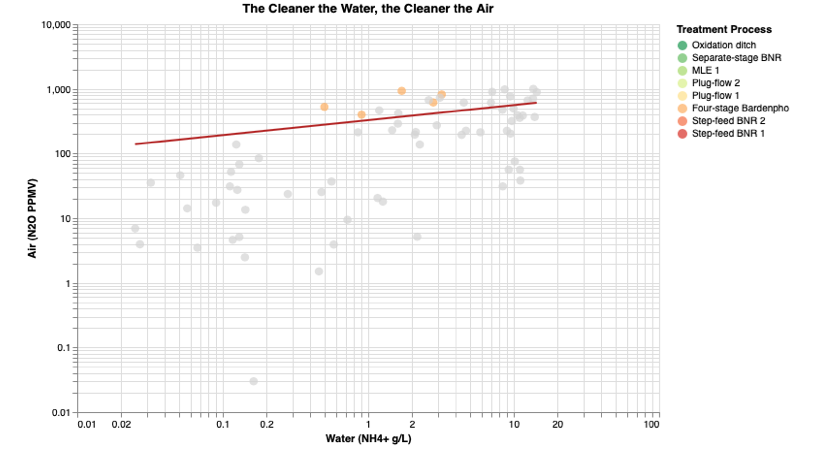
Four-stage Bardenpho.
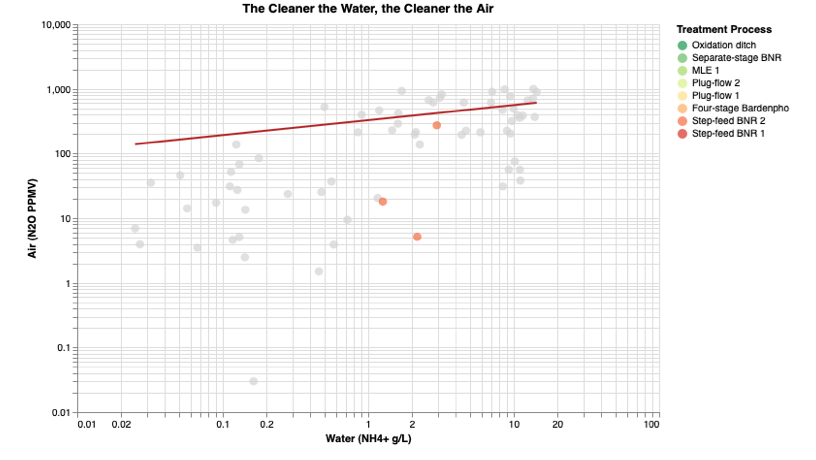
Step-feed BNR 2.
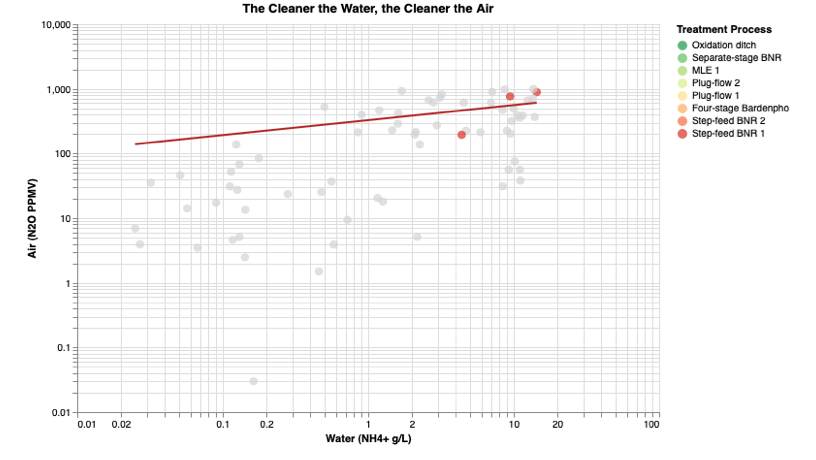
Step-feed BNR 1.
Water, Water Everywhere

Solvent-Based Desalination
The daily desalination capacity is millions of cubic meters, this includes industrial sources like oil and gas production and inland brine concentrates that can contain 2 to 10 times the salt quotient of seawater—a level toxic to plant and animal life. These hypersalinated brines are so concentrated that traditional techniques, such as reverse osmosis, cannot desalinate them; there is currently no efficient method by which they can be either safely repurposed or safely discharged.
Temperature swing solvent extraction (TSSE) is a pioneering desalination technology devised by Ngai Yin Yip, Lavon Duddleson Krumb Assistant Professor of Earth and Environmental Engineering, to achieve zero-liquid discharge of such hypersaline brines. It runs on low-grade thermal energy easily sourced from industrial waste heat, shallow-well geothermal, or low-concentration solar collectors. Its solvent is reusable with no performance fall off, and the result is a 75% energy savings over thermally evaporating brine.
Optimizing Infrastucture
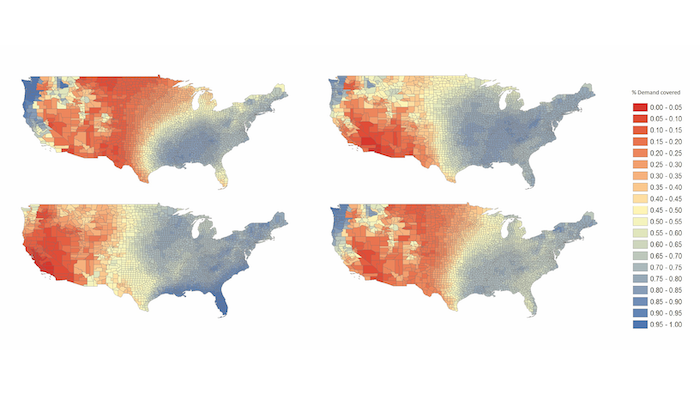
Replacing aging U.S. water systems would cost $1 to $2 trillion by 2030 . Smart, decentralized systems for water re-use could more economically meet domestic needs.
Upmanu Lall directs the Columbia Water Center (CWC) and its America’s Water Initiative, and chairs the Department of Earth and Environmental Engineering. An expert in how climate risks impact water, energy, and food systems, he devises approaches by which society can mitigate these risks, especially for those most vulnerable.
As lead author of the Fourth National Climate Assessment’s chapter on water, Lall detailed serious threats facing America’s water supply, where dwindling resources and aging infrastructure could soon drive sharp drop-offs not only in quantity but also quality. In response, America’s Water is developing tools and platforms to enable strategic interventions tailored to local circumstances. These include climate prediction, as well as simulation and optimization models to inform resilient and affordable approaches for replacing and renovating aging dams and other key infrastructure, along with smart, decentralized designs to abate lead in drinking water and prevent environmental and public health fallout from failed septic and sewer systems.
Their work illustrates how pairing modular technologies that harvest and treat water from multiple sources (rain, urban runoff, wastewater, and others) with real time sensors monitoring system performance—including contaminants—and smart diagnostic tools enables community-based solutions that are scalable and cost effective. Lall also has shown how optimizing renewable water and energy networks in response to community density and variability in precipitation and solar availability can leverage trade-offs in water and energy storage.
